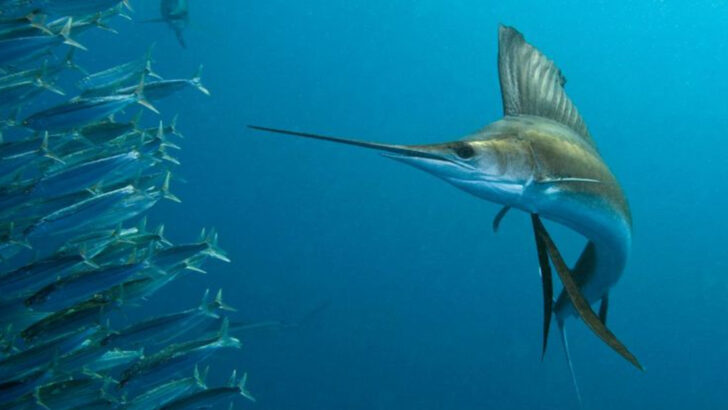The sailfish doesn’t swim—it torpedoes.
This ocean athlete can slice through water at speeds pushing 68 mph, leaving nearly every other fish in the dust. If sea creatures held the Olympics, the sailfish would own the gold—and break the record while doing it backward.
But it’s not just fast.
It’s flashy.
It’s fierce.
And it’s full of surprises.
With a sail-like dorsal fin that pops up like a flag in battle, and a bill built for blitz attacks, the sailfish is a living missile with attitude. Watching one hunt is like witnessing a ballet performed with knives and jet engines.
What gives it this wild edge?
What’s hiding beneath those scales that lets it outrun sharks, boats—even your jaw as it drops?
Buckle up.
We’re diving into ten mind-blowing facts about the sailfish—and how it became the undisputed speed demon of U.S. waters.
Sailfish Speed Record
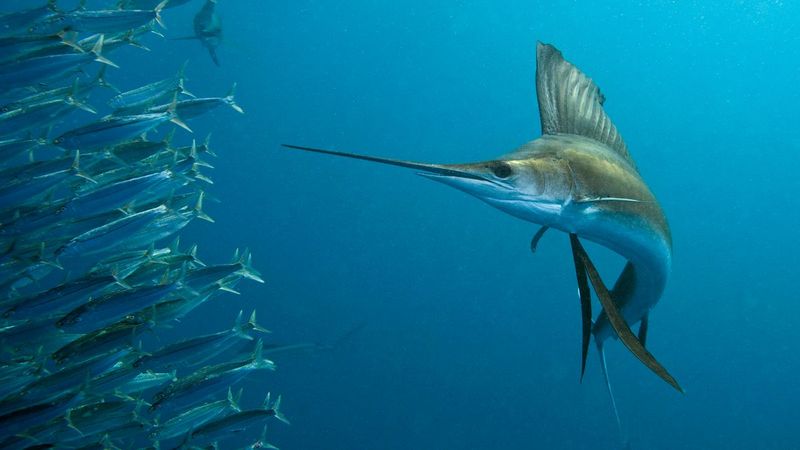
Sailfish are renowned for their speed, earning the title of the fastest fish. They can reach speeds up to 68 miles per hour, a feat that is both thrilling and awe-inspiring. This unmatched velocity allows them to evade predators and swiftly catch prey.
Imagine witnessing this magnificent fish zipping through the water, leaving behind a trail of bubbles as it goes. The sailfish’s streamlined body and powerful muscles are perfectly adapted for such high-speed pursuits.
Fun fact: The sailfish’s speed record has been a subject of fascination for marine biologists and enthusiasts around the world.
Aerodynamic Body Design
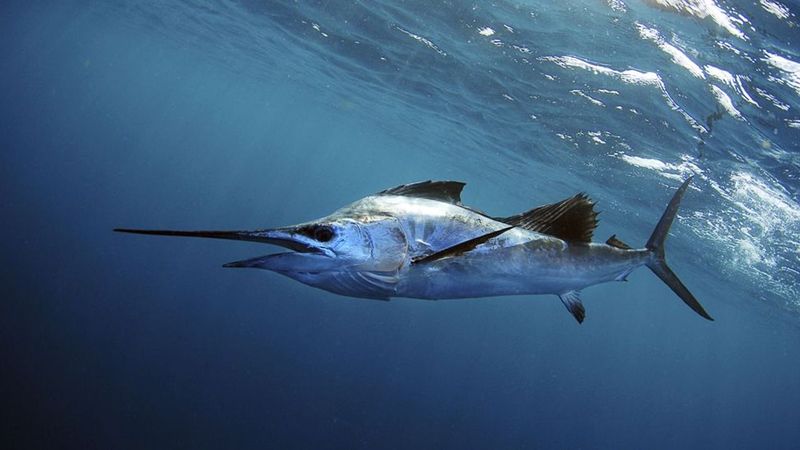
The sailfish’s aerodynamic body design is a key factor in its speed. Its elongated, torpedo-shaped body reduces drag, allowing it to cut through the water with minimal resistance. The dorsal fin, resembling a sail, can be retracted to enhance its sleek profile.
This design is not just about aesthetics; it’s a finely-tuned evolutionary marvel. The pectoral fins act like wings, providing stability and control during rapid movements.
It’s a perfect example of nature’s engineering, where form meets function to achieve unparalleled speed in the marine environment.
Color-Changing Ability
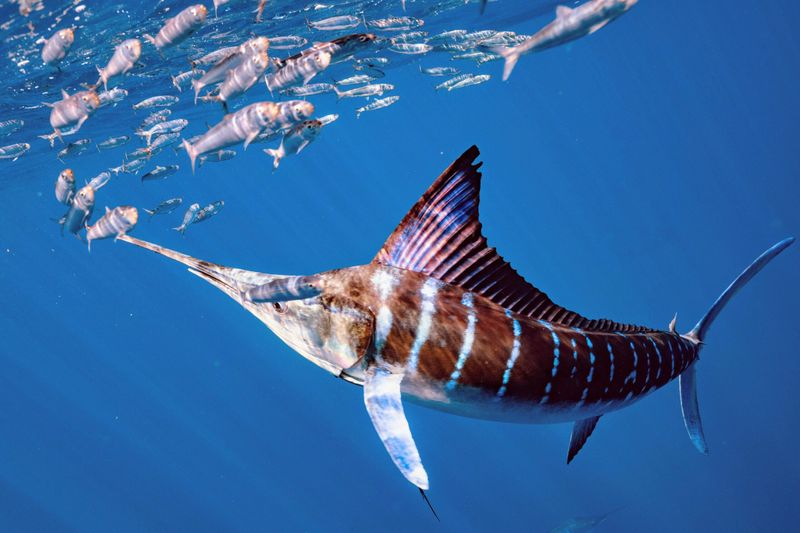
One of the sailfish’s most intriguing features is its ability to change color. This color-changing ability is not just for show; it plays a crucial role in hunting and communication. When excited or hunting, their bodies can flash vibrant colors.
This sudden change can confuse prey, giving the sailfish an edge in capturing a meal. It’s a brilliant strategy that showcases the sailfish’s adaptability in its natural habitat.
The ability to change colors is also used in social interactions, making it a versatile trait in the life of a sailfish.
Unique Hunting Techniques
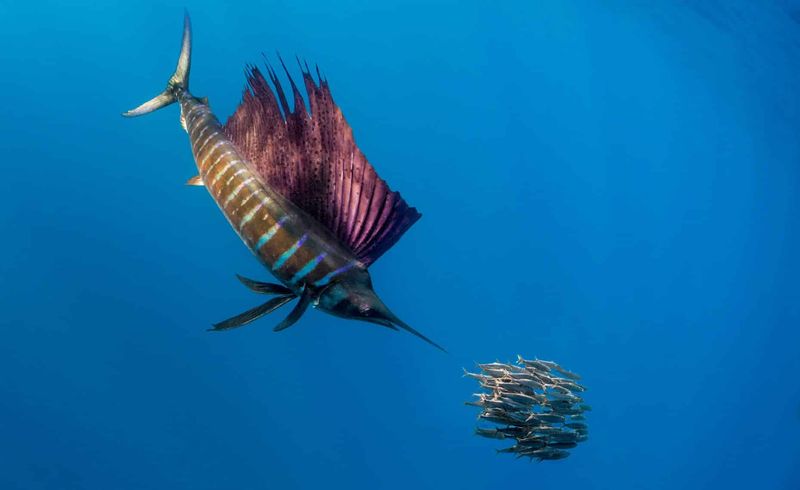
Sailfish are not just fast; they are strategic hunters. One of their unique hunting techniques involves using their long, sword-like bills to slash through schools of fish. This technique stuns or injures the prey, making them easier to catch.
Often, sailfish hunt in groups, coordinating their movements to drive fish into tight balls, a method that increases their hunting success. It’s a testament to their intelligence and cooperation.
These hunting strategies highlight the sailfish’s prowess as a predator, combining speed with skill.
The Role of the Dorsal Fin
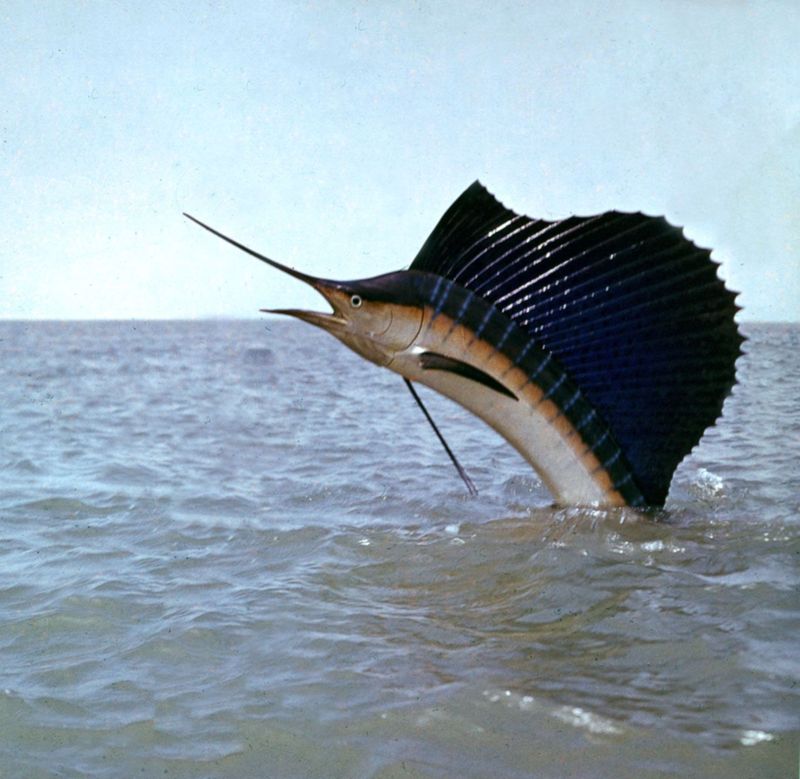
The dorsal fin, or sail, of the sailfish is more than just a distinctive feature. It plays a vital role in their swimming mechanics. When extended, it helps in stabilizing the fish during high-speed chases.
During slower movements or when threatened, the dorsal fin can be raised, making the sailfish appear larger and more intimidating. This adaptability is crucial for both survival and social interactions.
The dorsal fin’s multipurpose functionality is a splendid example of evolutionary adaptation in marine life.
Habitat and Distribution
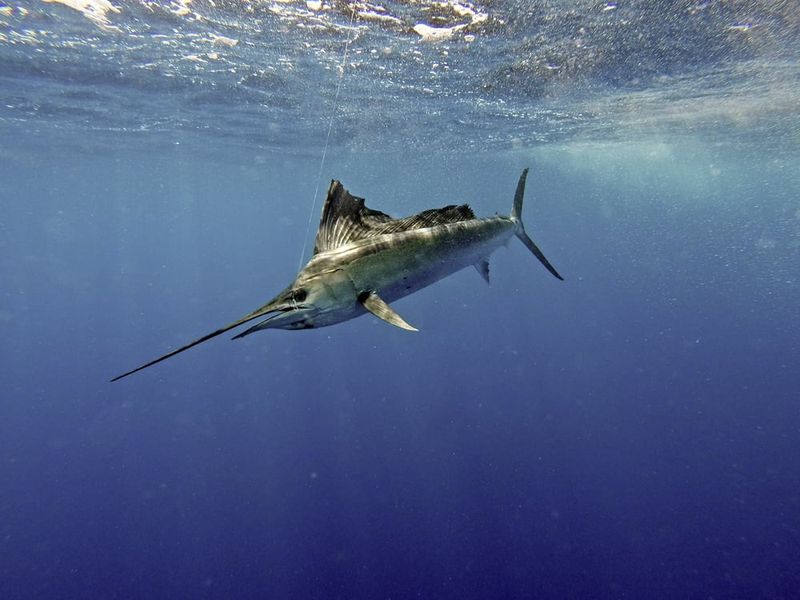
Sailfish are widely distributed across warm and temperate waters, including the Atlantic and Pacific Oceans. In U.S. waters, they are commonly found off the coast of Florida, thriving in the warm Gulf Stream currents.
Their preference for warm waters is linked to the availability of prey, such as small fish and squid, which are abundant in these regions. This distribution ensures they have ample hunting grounds.
Understanding their habitat preferences helps in conservation efforts, ensuring these magnificent creatures continue to thrive in their natural environments.
Reproduction and Lifecycle
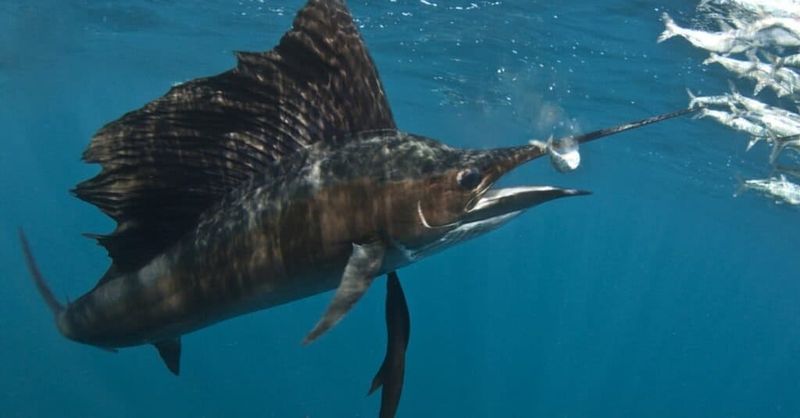
The reproduction of sailfish involves spawning in warm ocean waters. Females release millions of eggs, which are then fertilized by males. This method ensures a high likelihood of survival for at least some offspring.
The lifecycle of a sailfish is a fascinating journey, from tiny larvae to powerful adults. Their growth rate is rapid, allowing them to reach maturity quickly.
These reproductive strategies are crucial for maintaining their populations, ensuring that the fastest fish in the ocean continues to grace our waters.
Diet and Feeding Habits
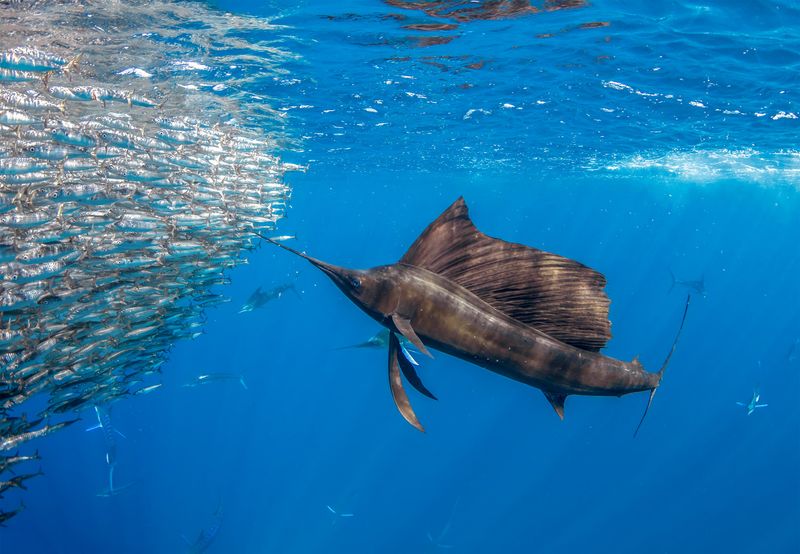
Sailfish have a diverse diet, primarily consisting of smaller fish and cephalopods. Their feeding habits are a testament to their hunting prowess. They use speed and agility to swiftly capture prey, often working in groups to maximize efficiency.
Their sharp bills play a pivotal role in their feeding strategy, allowing them to slash through prey with ease. This feeding technique showcases their adaptability and skill as hunters.
The diversity in their diet ensures they have access to various food sources, supporting their energetic lifestyle.
Historical Significance and Conservation

Throughout history, sailfish have been prized targets for sport fishing, admired for their speed and challenge. This historical significance has contributed to their iconic status in the fishing community.
However, this has also led to concerns about overfishing and the need for conservation. Efforts are being made to ensure sustainable practices, protecting this incredible species for future generations.
Understanding their historical context helps in appreciating the need for conservation, balancing human interests with ecological responsibility.
Cultural Impact and Symbolism
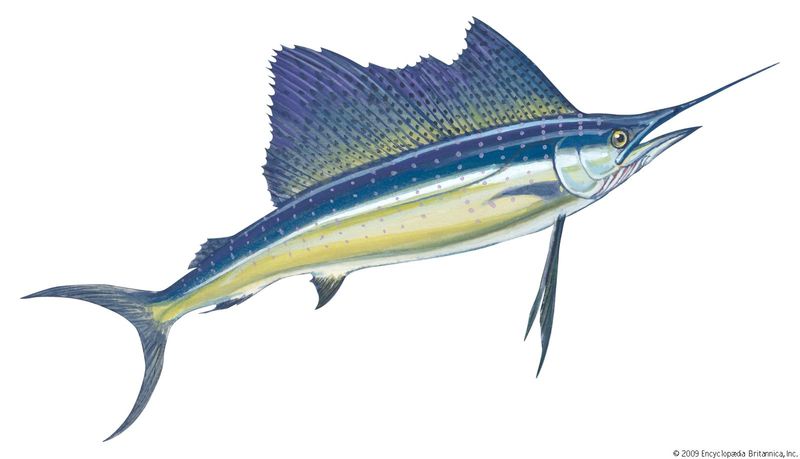
In various cultures, sailfish symbolize strength, freedom, and agility. Their reputation as the fastest fish has made them a popular emblem in art and literature, representing speed and prowess.
They are often depicted in artwork, capturing the imagination of artists and inspiring awe. This cultural impact highlights their significance beyond just the marine world.
The symbolism associated with sailfish continues to resonate, reflecting their timeless appeal and the admiration they inspire across different societies.

